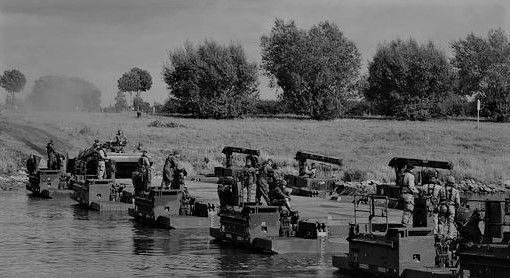By Carl Conetta, Project on Defense Alternatives, Briefing Memo, 12 March 1998.
 In the words of one strategic analyst, attrition is “war waged by industrial methods.” In the attrition approach, the adversary is defined as a series of targets to be “serviced” (that is, destroyed). Other than the achievement of initial surprise in the attack, there is little art or artifice in the approach. As an ideal type it takes as its prime objective the physical destruction of the adversary’s material strength; it associates success with material superiority; and it adopts as a basic principle the simple imperative; “more.”
In the words of one strategic analyst, attrition is “war waged by industrial methods.” In the attrition approach, the adversary is defined as a series of targets to be “serviced” (that is, destroyed). Other than the achievement of initial surprise in the attack, there is little art or artifice in the approach. As an ideal type it takes as its prime objective the physical destruction of the adversary’s material strength; it associates success with material superiority; and it adopts as a basic principle the simple imperative; “more.”
In maneuver warfare, by contrast, “the goal is to incapacitate by systemic disruption” and dislocation. The target is the coherence of the adversary’s combat systems, methods, and plans. The hope is that a very selective action can have a cascading effect — an effect disproportionately greater than the degree of effort. An analogy from architecture would be the removal or destruction of the keystone of an arch. Here the arch is conceived as a “system” whose dynamic element is gravity which has been converted to useful purpose by the positioning of the keystone — the removal of which disrupts the stability of the system, resulting in its destruction.
The three basic principles of maneuver warfare are: (1) identify and target enemy centers of gravity, (2) set and maintain favorable terms of battle, and (3) find and exploit “gaps” in enemy strength.
In the example of the arch, the keystone is a “center of gravity” (in the strategic, not literal sense). Notably, it is not a “weakness,” nor a “strength” of the system (arch), but rather a source or enabler of strength. In war, centers of gravity are not absolute, but instead relative to the adversary’s character, methods, objectives, and plans. (In the First and Second World Wars, for instance, one of the Allied powers’ strategic centers of gravity was the secure industrial capacity of the United States, which Germany targeted indirectly by means of submarine warfare.) If centers of gravity have a universal or defining attribute, it is this: attacking them successfully has a cascading or catastrophic effect on enemy morale, organization, and operations. Centers of gravity exist at every level of war, and the epitome of maneuver is for a unit to upset an enemy center at one or more levels higher than its own level of organization, and to do so with minimal combat.
Setting the terms of battle (which among other things may include time, place, pace, intensity, and type of engagement) means ensuring that combat proceeds under conditions favorable to the defense. In general, the aim is to set terms that accentuate friendly strengths and enemy weaknesses while minimizing friendly vulnerabilities and enemy strengths. The challenge for the practitioner of maneuver is to establish and maintain this condition.
Despite its linear connotation, the injunction to “find and exploit gaps” means aligning friendly strength against enemy weakness in the combat process. Success in setting the terms of battle facilitates this effort while restricting enemy opportunities to exploit gaps in friendly strength.
The three aspects of maneuver operate together to achieve disproportionate effects, in the following fashion: centers of gravity define the objective, the imperative to find and exploit “gaps” defines the approach to the objective, and setting the terms of battle facilitates the effort overall while controlling for enemy counter-initiatives. Indeed, the greater the success in setting the overall terms of battle, the easier it is to find gaps and compromise centers of gravity.
Any significant success in the maneuver contest depends on first, achieving and maintaining a relative advantage in the flow of accurate information, and second, possessing greater relative flexibility in the allocation of combat power.
